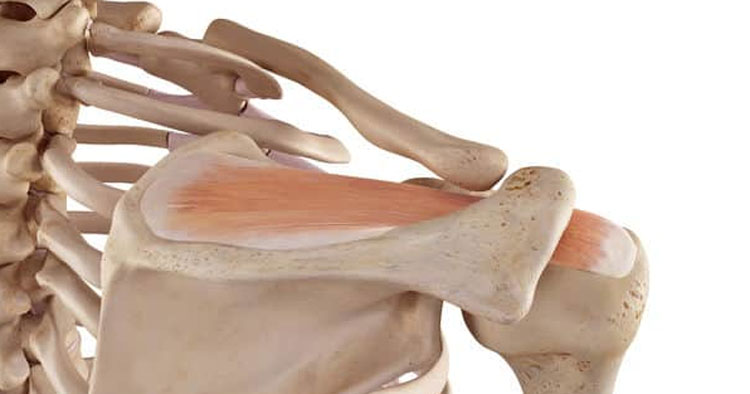What is the rotator cuff?
There is so much fear, noise, and misinformation about rotator cuffs. So we thought we’d give some background. Patients see us for shoulder physio terrified that they have torn their “cuff”. Or worried because they know someone who has a rotator cuff injury that didn’t heal. Let’s not even get started on the fear surrounding surgery.
Let’s break down some of the basics regarding rotator cuff physio. The rotator cuff is a group of four muscles in the shoulder. The muscles and tendons of the rotator cuff help to stabilize the shoulder joint and allow for a wide range of motion. The ball and socket joint of the shoulder is very shallow. As such, it relies on the soft-tissue capsule that surrounds it for stability. This capsule is made up of ligaments, and is encased in tendons of the rotator cuff.Which muscles make up the rotator cuff?
The rotator cuff muscles are the supraspinatus, infraspinatus, teres minor, and subscapularis. These muscles and tendons attach the shoulder blade (scapula) to the upper arm bone (humerus) and help to lift and rotate the arm.Shoulder stability and the cuff
Due to its role in both movement and stability of the shoulder joint, the rotator cuff is implicated in all actions of the shoulder. Injury or damage to the rotator cuff can occur due to overuse, sudden impact, or degeneration due to age. Many of these changes are completely normal, however in some cases they can cause pain and limited mobility in the shoulder.How does injury occur?
There are several mechanisms which may lead to a rotator cuff injury. The key to good rotator cuff physio management is understanding all of the likely contributing mechanisms. An overview of of some of the broad mechanisms that can lead to a rotator cuff injury:- Overuse: Repetitive overhead activities or sports, such as throwing a baseball or tennis, can lead to overuse injuries of the rotator cuff muscles and tendons. Like all tendons in the body, the rotator cuff tendons go through wear and repair in response to the loading we put on them. Large spikes in the load we place on them, and insufficient periods of repair can tip the scales and result in disordered healing processes (tendinopathy), or tears in the tendon.
- Sudden impact: Traumatic injuries, such as falls or accidents, can cause sudden damage to the rotator cuff muscles and tendons.
- Age-related degeneration: As we age, the tendons of the rotator cuff can go through changes that make them less tolerant of stretch, tensile load, and compression. This can make them more susceptible to sudden impact, or overuse.
- Posture: Posture often speaks to lack of strength in the scapular stabilisers, which can be implicated in rotator cuff disorders. Also, prolonged postures, such as forward slouch with rounded shoulders, can mean the tendons of the cuff that wrap around the shoulder are being held in a position of stretch and compression. This in turn can result in a thickening and weakening of the tendon.
- Genetic factors: Some people may have a genetic predisposition to rotator cuff injuries due to the structure of their shoulder joint. Shallow glenoid (sockets), bonny abnormalities of the humerus, or abnormalities in the acromion can predispose to rotator cuff injuries.
Supraspinatus tendon injuries: The supraspinatus tendon is the most common site of injury in the rotator cuff. The supraspinatus is a small muscle that runs across the top of the scapula. It passes under a bony archway formed by the acromion, and attaches into the top of the humerus. The supraspinatus’ main role is keeping the head of the humerus located on the glenoid. It resists downward slipping of the humerus. And it acts to help abduct the arm. As it passes under the acromion, it can become impinged with movements above shoulder height. This can result in supraspinatus tendinopathy, or supraspinatus tears.
Chronic impingement can result in changes to the tendon (tendinopathy) where the tendon thickens and weakens in response to compressive load. Impingement can also result in tears within the tendon. Also implicated here is the sub-acromial bursa. The bursa sits in the archway along with the tenon, and acts to decrease friction as tendons pass over bony prominences. Ongoing tendon and bursal irritation are often grouped by the term “shoulder impingement”.
Infraspinatus tendon strains: The infraspinatus is the large rotator cuff muscle on the back of the shoulder blade. Its primary role is in external rotation movements of the arm. Like the supraspinatus, the infraspinatus tendon can go through changes due to load, compression and impingement. This can result in a thickened and weaker tendon – more susceptible to injury.
Subscapularis tendon strains: Subscapularis muscle sits on the front of the shoulder blade. It acts as our primary internal rotator. Subscapularis can develop tendinopathy changes in response to overuse. This can vary from gym work and swimming, to prolonged holding and carrying. We see irritation to this tendon in a range of people:
- Parents holding newborns and children
- High intensity gym routines
- Overhead athletes – throwing sports, tennis, rock climbing
- Contact sports- often involving tackling and grappling
Long head of bicep (LHB) inflammation: LHB pain is often seen in conjunction with rotator cuff pathology, particularly subscapularis tendon irritation. The LHB is a tendon that runs through a groove in the top of the humerus. It attaches to the top of the glenoid. At the glenoid the LHB attaches into the labrum – a cartilage rim around the edge of the socket. In our experience, pain along the LHB in the anterior shoulder is often associated with injuries or irritation in the labrum. This can be a result of a traumatic / forceful injury, or overuse. Pain in the LHB can also arise from rotator cuff dysfunction.



